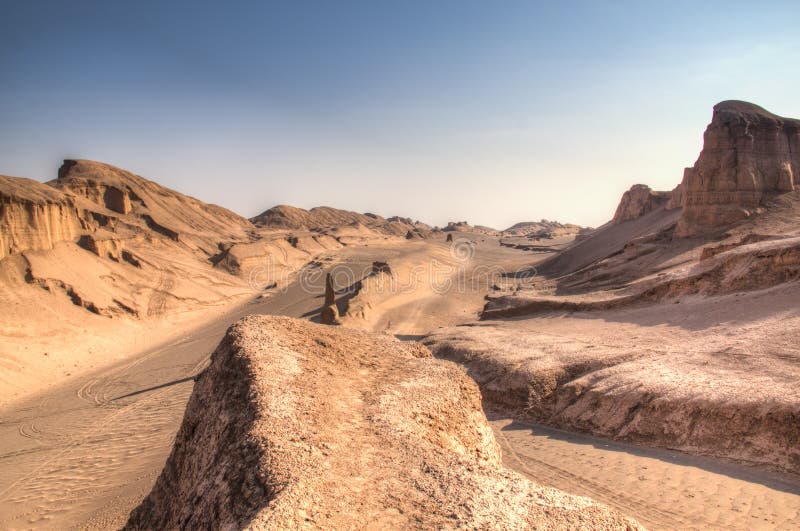
The ecosystem of the desert has been vastly unexplored to date because of the unforgiving conditions. The name of this part of the desert, according to legend, came when wheat was left on the lava accidentally only for it to be charred by the searing heat. This particular region is a part of the desert that is covered with dark lava spanning an area of approximately 190 square miles. These high temperatures were recorded in the Gandom Beryan (which means “toasted wheat”) region of the desert. This high temperature only applies to the surface though, the air temperatures are much cooler. The data recorded showed that the surface temperatures in the desert have hit an intense 159.3 ☏ (70.7 ☌) at some point. Hottest Land SurfaceĪccording to equipment installed by NASA which was recording data from 2003 to 2010, the Dasht-e Lut has the hottest land temperature on earth. There are more landforms in the region but these two are the most visible due to sheer size. To add to the beauty in the desert, the area is undisturbed by human beings or animals. On the other end of the desert, the east, there is a massive sand-sea due to the strong winds that also adds to the impressiveness of the desert. These features are more common in the west of the desert. Essentially, yardangs are huge sand dunes that are stacked in a way that they appear corrugated.

Arguably, the most impressive of these formations on the landscape are the yardangs. The Lut Desert is renowned for its picturesque landscape especially when viewed from the sky.

Dasht-e Loot has a length of 300 miles and a width of 200 miles which translates to a massive 60,000 square miles. The Dasht-e Lut has an area of about 20,000 square miles and is among the largest in the vicinity. The Lut Desert is part of the Dasht dry lake basins (that are now deserts) in Iran alongside the Dasht-e Loot, Dasht-e Kavir, and other smaller ones. In the religious texts, he was a messenger of God who was sent to Sodom and Gomorrah. This prophet is the same as the Lot from the Bible’s Old Testament as well as from the Qur’an. The name “Lut” is an Arabic reference to Prophet Lot. Compared to other deserts in the world in terms of sheer size, the Lut Desert is at position 27. More specifically, it is located in three provinces namely Kerman, Baluchestan, and Sistan. The Dasht-e Lut Desert, which is also known as the Lut Desert, is an extensive salty desert that is in the southeastern side of Iran. Additional images taken by astronauts and cosmonauts can be viewed at the NASA/JSC Gateway to Astronaut Photography of Earth.Where Is The Dasht-e Lut Desert? The Dasht-e Lut Desert is famous for its stunning landscape, including the sand dune formations. The International Space Station Program supports the laboratory to help astronauts take pictures of Earth that will be of the greatest value to scientists and the public, and to make those images freely available on the Internet.

The image in this article has been cropped and contrast enhanced lens artifacts have also been removed. They are located downslope, near the margin of the lake’s dry, salty soils.Īstronaut photograph ISS012-E-18779 was acquired February 28, 2006, with a Kodak 760C digital camera using an 180 mm lens, and is provided by the ISS Crew Earth Observations experiment and the Image Science & Analysis Group, Johnson Space Center. Agricultural fields that depend on this precipitation appear as small dark patches in this image. In near-tropical deserts, elevated areas capture most precipitation. The patchy, elongated, light-colored feature in the foreground (parallel to the mountain range) is the northernmost of the Dasht dry lakes that stretch southward 300 kilometers (186 miles). Iran is climatically part of the Afro-Asian belt of deserts that stretch from the Cape Verde islands off West Africa all the way to Mongolia near Beijing, China. Little vegetation can be seen from space in the arid interior basin of the Dasht-e-Lut. While not a major oil-producing region like the Zagros Fold Belt to the southwest, the mountains of east-central Iran contain economically important deposits of copper and other metals. The convoluted appearance results from erosion of folded and faulted rocks-softer rocks erode away quickly, leaving more resistant rock to form linear ridges that are perpendicular to the direction of compression. The range rises 1,818 meters (6,000 feet) above sea level and lies 750 kilometers (466 miles) north of the Persian Gulf. The image takes advantage of the Sun’s low angle to reveal linear geological structures of the Iranian mountain range bordering the western edge of the basin known as Dasht-e-Lut. An International Space Station crew member took this striking photograph one evening in late February.


 0 kommentar(er)
0 kommentar(er)
